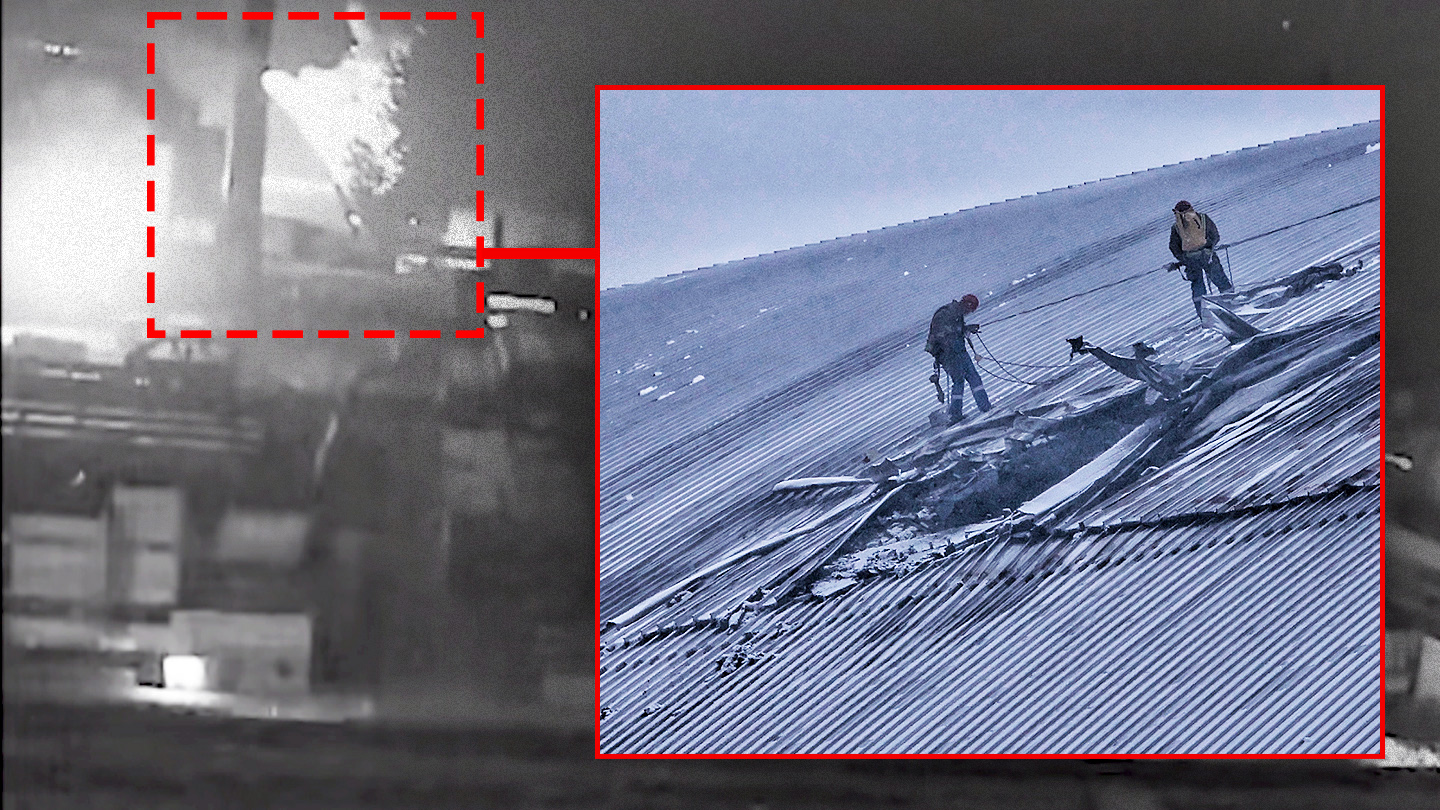Top Ukrainian nuclear experts tell The War Zone that they are concerned about the future effects of a drone strike on the radiation shield covering the doomed Reactor 4 at the decommissioned Chernobyl Nuclear Power Plant.
While the International Atomic Energy Agency (IAEA) said there was no immediate radiation release, the massive, complexly designed New Safe Containment (NSC) structure was compromised and could suffer further damage, the experts told us. In addition, one expert expressed concern that in a worst-case scenario, the ensuing repair work could require the entire containment structure to be rolled back on tracks, exposing the destroyed inner core that the NSC was designed to encapsulate.
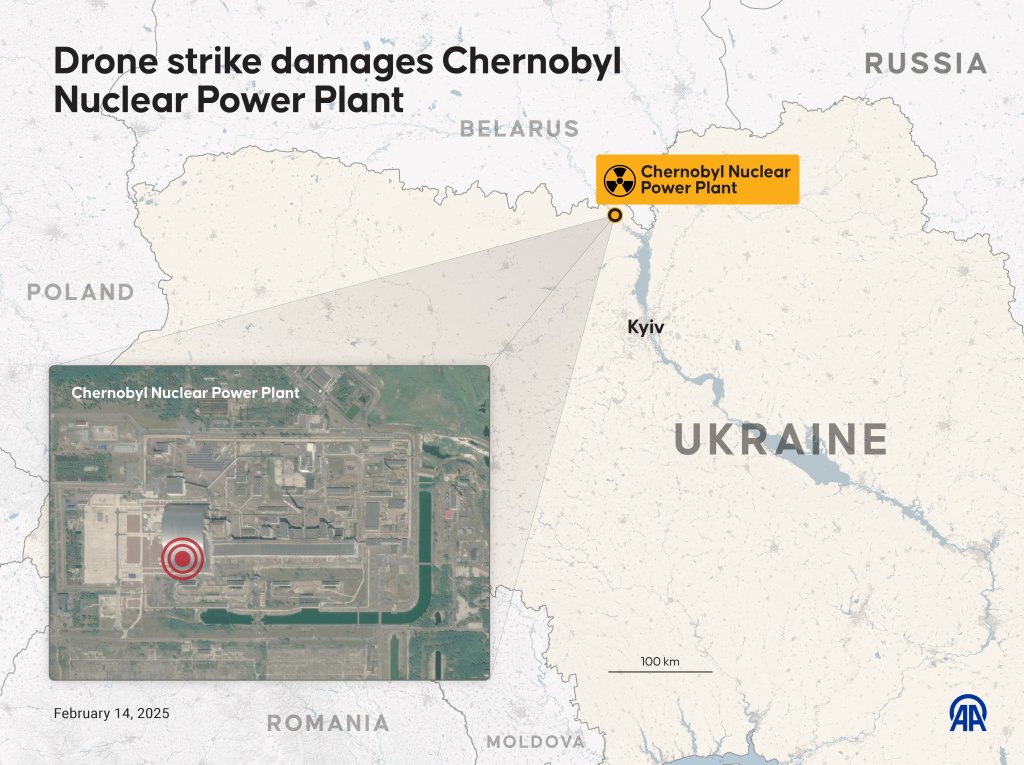
The concerns were raised after a drone struck the NSC overnight, causing a fire and breach of the NSC roof’s outer layer, IAEA Director General Rafael Mariano Grossi stated. While the outer layer sustained damage, investigations are ongoing to determine the status of the inner layer of that roof. Video and images emerging in the aftermath show a fire, as well as remains of the drone that fell into the facility. Emergency personnel on top of the NSC were also seen assessing the damage. Ukraine says this was a deliberate attack while the Russians say they did not strike the facility. Because the structure is so tall, the possibility exists that this could have been accidental.
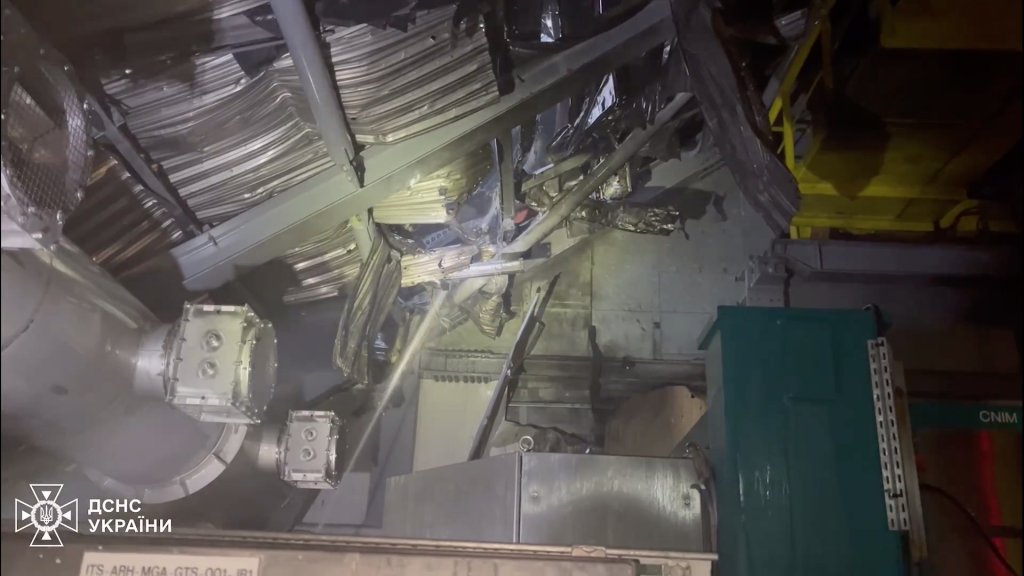

An eyewitness said the damage could have been catastrophic and called Russia “a terrorist state.”
The nearly 2,000-ton NSC is a huge arch structure. Standing 360 feet tall, 213 feet long, and 850 feet wide, it was built to slide over the remains of the reactor that melted down in 1986. In the wake of that disaster, workers built a 21-story tall “sarcophagus” to cover Reactor 4. However, it left many gaps and was not secured to the underlying structure, which could still collapse. That left the enclosure vulnerable to leaking rainwater, settling, earthquakes, as well as aircraft and projectiles. To mitigate these problems, the NSC was built at the cost of nearly $2 billion and pushed via railroad-like tracks over the sarcophagus in 2016.
While designed to withstand an earthquake, tornadoes and even small aircraft strikes, the NSC was not built to protect against an explosive drone, the experts told us.
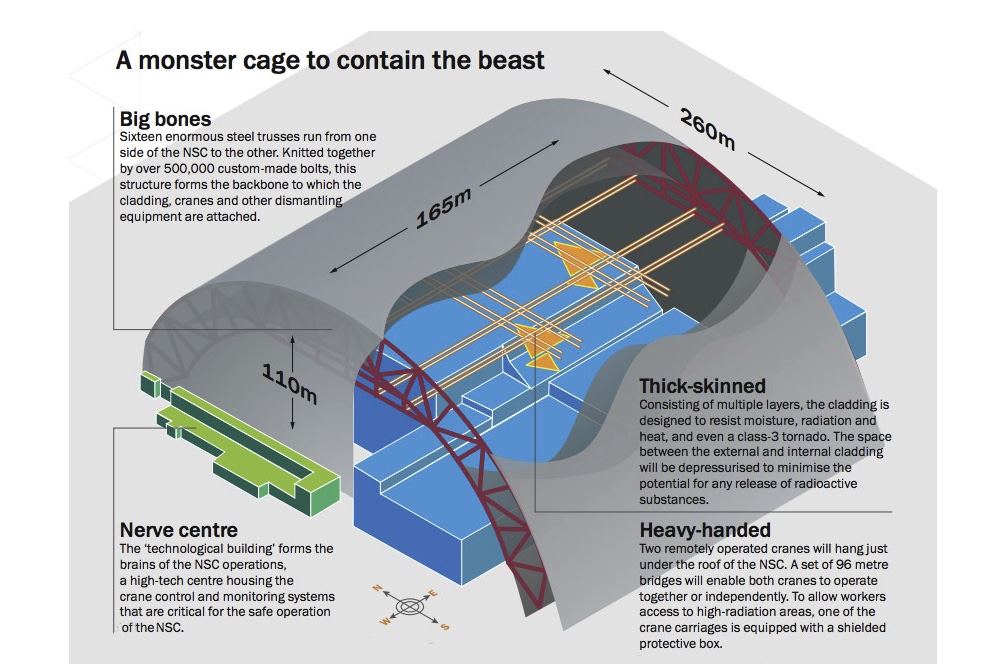


Another big concern is that explosive shock waves from the strike could have caused damage far beyond the hole it punched in what was a virtually hermetically sealed container, the commander of the radiation surveillance platoon in the Chernobyl Zone during the first months after the 1986 explosion told us.
The NSC is a complex, integrated system with many components and the section that was struck is just one part of that, explained Sergii Mirnyi, now a research fellow at the National Chernobyl Museum in Kyiv. “The main problem is not the opening itself, but rather what will happen to the other components and the system as a whole,” Miryni explained.
There are two layers to the roof. The drone punched through the first layer and officials are assessing the integrity of the second. However, the strike damaged rails attached to it designed to move cranes that eventually will take apart the remains of Reactor 4, Olena Pareniuk, a senior researcher for Ukraine’s Institute for Safety Problems of Nuclear Power Plants (ISSNP), told us. ISSNP oversees operations at the NSC.
The damage will delay testing on the crane system, Pareniuk stated.
“That’s a big deal,” she exclaimed, adding that an assessment is now underway to determine the extent of the damage.
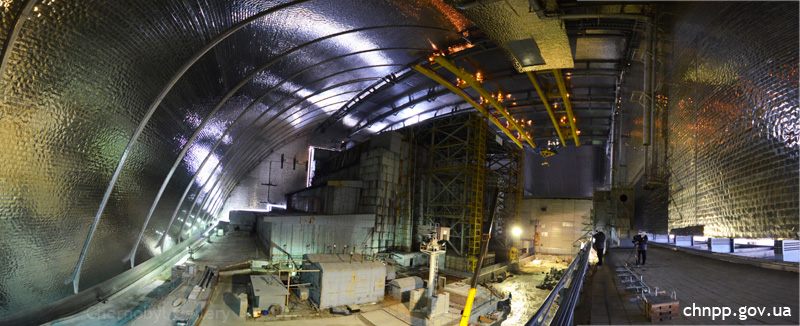
The worst-case scenario is that future repair work will require the NSC to be rolled back on the tracks, exposing the sarcophagus.
“That is an unstable structure,” she said of the sarcophagus. “Of course, it would be dangerous if we had to do this.”
That would risk the release of radioactive material and be “crazy expensive,” she said.
Mirnyi estimated that the repair work could cost hundreds of millions of dollars.
Pareniuk stressed that it was very early in the process and much more will come to light in the coming days and weeks.
This is the latest in a series of incidents affecting nuclear power plants in the Ukrainian war zone. There were concerns raised when the Russians first occupied Chernobyl in the early days of the war that radioactive dirt could be kicked up by their presence and the facility itself could be struck by a weapon. Just weeks later, combat at the Zaporizhzhia Nuclear Power Plant (ZNPP), Europe’s largest, sparked global concerns after a training facility on the site was struck by a projectile. The Russians later occupied ZNPP and built defensive fortifications on it as both sides traded accusations about attacks there.
You can see the fighting that took place at the ZNPP in the following video.
Today’s drone strike is another glaring reminder of the dangers of nuclear facilities in the line of fire and how Chernobyl still acts as a dangerous flashpoint in the ongoing conflict. We will know more about the exact extent of the damage and the cost to repair it in the coming days and weeks.
Contact the author: howard@thewarzone.com
